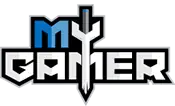Philosophers’ Legacy –
With a legendary development team at the helm (Chrono Trigger, Final Fantasy XIII, Chrono Cross), there are high hopes for The Legend of Legacy, a 3DS exclusive RPG. Unfortunately, the colorful art style and stellar soundtrack take precedence over the tedious and random combat mechanics and leveling abilities.
With an attempt to capture the JRPG charm of the 80s and 90s classics, this labyrinthine RPG might look like Bravely Default (a good thing) but plays a little more like Final Fantasy II (a bad thing). The game opens with the player choosing one of seven playable characters, each with their own strengths and weaknesses. Despite the player’s choice, it really has no major difference to the flow of the story outside of the opening segments, eliminating the need for multiple play-throughs. Even though you select one main character, the player is partnered up with two other party members, eventually gaining the ability to swap out the supporting cast at will. Negatively, swapping party members is detrimental to the player as unused characters will often be vastly underpowered. In all honesty, it is best to stick with one party the whole time.
Selecting the right party members is key to success since the difficulty can be devastatingly brutal. First, monsters appear as simple shadow cutouts when the player is out exploring. But these textureless generic avatars could yield a party of six enemies, instead of the assumed one, that could stomp your party in an instant. Each and every encounter can very well be your last and death is handled poorly – the player is punished by being sent back to the beginning of the map, potentially losing hours of progress, which is amplified because the only way to truly save your progress is to travel all the way back to the town. The “stance” combat mechanic is important to the success of each battle. As combat starts, the player basically tells his team to attack, support, or go on the defensive. Having a defensive tank that can take a few hits, a gunslinger who can attack, and one member who can heal is party combination that seems to work the best and is somewhat reminiscent of a SaGa game. Positively, to help with the high difficulty, the player can resurrect fallen comrades with a heal spell. It is great to see some new ideas be embedded into a classic RPG formula but ultimately becomes tedious as battles can range from just button mash until the results screen or hope to high hell this baddies doesn’t slaughter me in one hit.
Besides the uneven difficulty that unnecessarily adds tedium to combat, party members do not level up like a typical RPG. Instead, strength increases and new abilities are unlocked at random. That’s right, there is no indicator as to when or how your HP will increase, a new ability will be gained, or when attack power jumps a level. This takes grinding to a whole new level and reminds me a lot of Final Fantasy II – if you keep physically attacking, your attack power will eventually increase, if you take a lot of physical damage, your defensive rating will increase in time. Here, however, there is no rhyme or reason as to when an enhancement will be unlocked. Making matters worse, characters will gain these new abilities mid-fight and will always use that new ability the moment it is learned. Naturally, if you had an important Cure spell cued up, only to have your character cast a failed but newly learned lullaby spell during a boss battle, you are basically screwed to no fault of your own. Also, boss battles basically seem to appear out of nowhere, but even if you did know about them in advance, the player cannot still properly prepare because of the random leveling up mechanic. This style of combat is actually disrespectful to the player especially since the only way to save is to travel all the way back to the town’s inn. And with such a strong emphasis on exploration, the player is rewarded for selling filled-in maps after all, why can’t the player simply walk up the stairs in the inn? Why even put them there in the first place, teasing the player? There are some design choices that don’t make any sense.
The saving grace from the combat and leveling inadequacies is the graphical style and welcoming soundtrack. With a graphical style that looks like Bravely Default or even the remake of Final Fantasy IV on DS, developers have learned how to make decent looking 3D polygon character models on the 3DS. Using a colorful art palette and an inviting environmental pop-up book effect, admiring each landscape is a pleasure for the eyes and ears. Too bad the rest of the game basically crumbles under its own weight.
With no way to fast travel, death can come from any battle thanks to varied difficulty swings, no way to easily permanently save, enemies respawn even if the map and enemies have been cleared and are misrepresented with basic overworld avatars, and a horribly inconsistent leveling up system, The Legacy of Legend is a disappointing slog of a letdown despite having an all-star cast of fan-favorite game designers. Hardcore JRPG fans might find a few hours of entertainment but will probably be better off waiting for Bravely Second or the next Fire Emblem.
 Not As Good As: Bravely Default
Not As Good As: Bravely Default
Also Try: Nostalgia
Wait For It: Final Fantasy XV
By: Zachary Gasiorowski, Editor in Chief myGamer.com
Twitter: @ZackGaz
Rating
Our Rating - 6.3
6.3
Total Score
Editor in Chief - been writing for mygamer,com for 20+ years. Gaming enthusiast. Hater of pants. Publisher of obscure gaming content on my YT channel.
- Twitter @ZackGaz
- youtube.com/@ZackGaz
- Personal blog at: https://squallsnake.com/
- BuyMeACoffee: https://www.buymeacoffee.com/zackgaz
- Patreon: https://www.patreon.com/squallsnake
- Twitch: https://www.twitch.tv/squallsnake7
- I am the EiC of: https://www.MyGamer.com/























Leave a Reply